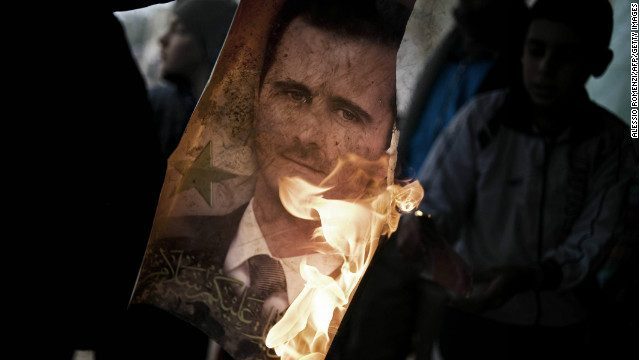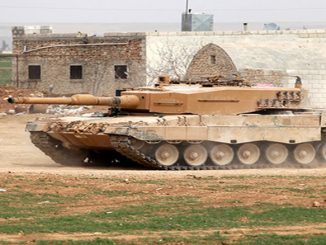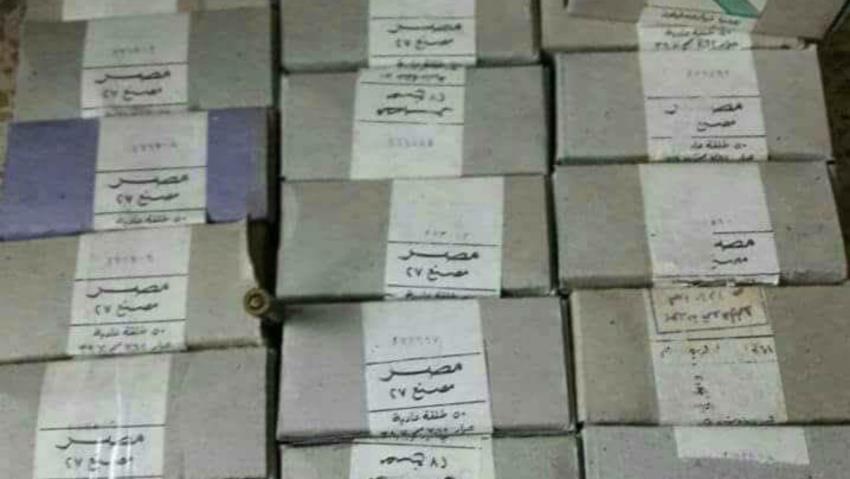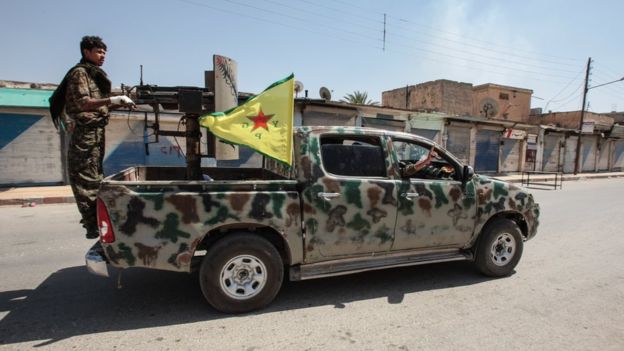
In January 2011, citizens across Egypt and Tunisia began demonstrating against their governments. Their calls for change swelled into a collective outrage that, in Tunisia, quickly pushed the president into exile. Before the year’s famous spring had even begun, popular unrest was shaking some of the most entrenched regimes in the region.
But it had not yet touched Syria.
In an interview with The Wall Street Journal at the time, Syrian President Bashar al-Assad acknowledged the rising volume of neighbouring uprisings, but he quickly dismissed them. “Syria is stable,” he said. “Why? Because [we are] very closely linked to the beliefs of the people.”
Casting himself as a unique leader in the region, Assad said he would steer Syria clear of the “stagnant waters” that had bred unrest elsewhere. “We have to keep up … as a state and as institutions,” he added. “Political, administrative, economic: These are the changes we need.”
Assad’s words suggested an openness to political dialogue with the public, as well as a hint of sympathy for the “anger” and “desperation” that he perceived in protests elsewhere. He agreed that “reform in politics is important”, even if it came slowly and at the tail-end of other priorities.
Yet months later, when Syria saw dissent from its own people, the regime cracked down.YouTube videos surfaced of security forces firing into crowds.
By May, around 7,000 people had been detained. Then came the accounts of tortured minors, disappearances and crammed jail cells.
With the death toll of Syria’s civil war today around 400,000, Assad’s past rhetoric of change and “the people” now takes on a pall of cruel irony.
But the discrepancy between his words in January 2011 and his swift recourse to violence in May is more than mere hypocrisy. The moment also reveals a recurring strategy throughout Assad’s political career, one that frequently exploited – and sometimes fulfilled – expectations for reform in order to cultivate power.
The new change for Syria
Before he was denounced internationally as a war criminal, Assad once represented change for Syria. His rise to power in 2000 marked the end of a long, notoriously brutal rule by his father, Hafez.
Many thought Bashar, a British-educated eye doctor, would introduce democratic change. He was portrayed as an accidental president with no previous political ambitions; some even called him “geeky“.
Yet this only helped Assad in the public eye. Onlookers thought he was well-meaning, a dynastic black sheep who had distanced himself from the family politics that originally tapped his older brother, Bassel, for power.
Samer Abboud, an associate professor at Arcadia University who has written extensively about Syria, said this was a common representation.
“There are a couple of dominant narratives that are really simplistic in how they frame the possibilities of Assad’s presidency,” Abboud said. “In this theory, there’s an old guard [of politicians] and Assad represented the new guard who had to take them over.”
The old guard, supposedly consisting of politicians from the generation of Assad’s father, became a convenient source of blame when the president’s expected reforms never materialised. Western media began speculating that their resistance had crippled Assad’s authority.
As evidence of the president’s good intentions, they pointed to the Damascus Spring, a fleeting period in which Assad’s control had slackened, allowing political prisoners to walk free and intellectuals to hold public meetings.
These reforms were later reversed, and many of the intellectuals punished. Nevertheless, there persisted a political mythology of Assad as the failed reformer – a man who, despite original intent, could not change Syria. According to Abboud, however, the truth is not that simple.
“Characterising the period of his presidency … in these dichotomous terms is actually a bit misleading,” he said. “Because if you look at what happened on the economic front, [Syria] was transformed.”
Abboud noted that – in reality – Assad wielded enough authority to change the state approach to the economy, transforming how Syrians interacted with the national market in their daily lives.
Though some figures from his father’s “old-guard” remained, Assad leveraged his power to transport oil, slash subsidies and introduce capitalism to Syria. The state’s stance towards the economy went from almost total control to interventionist. Assad kept his sights trained on China, whose flourishing economy under one-party rule held strong appeal.
“The state basically pulled back and allowed the private sector to be the place where people make money and access services,” said Abboud.
In interviews with international media, Assad invoked the economy as Syria’s first priority. Real reform could be found in the wake of financial stability, he implied; what mattered most was to catch Syria up to an increasingly globalised world of trade and international tourism.
Assad had not enacted political change. His government carried out the same tactics of intimidation as his father’s, making use of unfair trials, an ironclad press law and notoriously cruel security forces to maintain control.
Yet his rhetorical bait and switch enabled him to neglect political reform while still cultivating a new reservoir of support among the growing, increasingly successful urban elite. For them, Assad had opened up a whole new Syria of private banks, five-star resorts and lavish restaurants.
A new clique of business owners began forming under Assad’s neoliberal policies. Benefiting from the regime’s crony capitalism, these families often lived in major cities and held closefamily or social ties to the Assads.
They concentrated ownership of major telecommunications, energy and construction industries among a sliver of no more than 200 people, according to some estimates. In 2011, the Financial Times estimated that Assad’s cousin, Remi Makhlouf, owned up to 60 percent of the national economy.
Though media narratives often maintain that Assad’s support comes from his Alawite sect, today many of the regime’s core backers reside in this generation of technocrats – some of them Sunnis – who found economic prosperity under his regime.
Beyond this super elite is also a swath of medium-sized business owners and merchants. Many of them had also seen their livelihoods improve under Assad, and had no interest in changing the status quo when the uprising began.
Assad had crafted an image of a modernised Syria while avoiding the blame for failed reform. Meanwhile, poorer citizens were suffering from rising inflation and a three-year long drought beginning in 2006 – the worst that ever affected modern-day Syria. Eight hundred thousand people working in agriculture had lost their livelihoods by 2009, even as development and banking industries grew.
As Joshua Landis, head of Middle Eastern studies at Oklahoma University, noted: “The poor and rural people were being cut off. Their standards of living collapsed … We can see the results of this because the 2011 uprising had really been an uprising of the rural areas, which had been shunted aside.”
As the uprising devolved into conflict, Assad began exploiting another popular narrative to maintain support: He represented himself as the supposed protector of Syria’s minorities.
Many Druze, Christian and other minorities in Syria felt that the opposition could not guarantee their safety should Assad lose the war. As groups such as the Islamic State (ISIS) began rising in power, Assad’s regime stoked these sentiments, portraying itself as a welcoming ally that spoke out against extremism and invited priests to appear on state television.
How Assad family role began?
This tactic proved effective due to Syria’s history of sectarian tensions and Assad’s position as a minority leader. His family hailed from the Alawite sect and today holds today significant political and economic clout in Syria.
Hafez, Bashar’s father, was an air force officer. He used the vehicle of the secular Baathist party to endure the tumult of postcolonial politics, riding out several coups against other leaders until he consolidated power in the 70s; from then on, any display of opposition to his inner circle was severely punished.
The national constitution mandated that the ruling group would always be the Baathparty.The most notorious example of Hafez’s brutality was his suppression of a Muslim Brotherhood uprising in Hama in 1982. Though numbers vary, some analysts say the government massacred as many as 30,000.
This image of a small minority ruling a country rife with sectarian tension has extended until today, serving to intensify Assad’s justifications for his own power.
Some minorities believe only Assad’s authority will protect them from groups like ISIS. Iraq’s “blood-soaked killing fields” nearby only increase this fear, serving as a terrifying example of ISIS’s capability for mass ethnic cleansing. According to Abboud, however, the concept of Assad as protector is a dangerous line of belief.
“A lot of people want to believe Assad is a defender of minorities,” he said. “People may feel that very deeply, but I don’t think it’s the case at all. The regime has had their way with all kinds of Syrians regardless of their sectarian affiliation.”
Assad has become a focal point of speculation in Syria’s civil war; his life is well-documented. But in addition to the facts and dates are the many narratives that surround his political figure – and it may be these, instead of mere biography, that have helped him keep power.
With the advent of ISIS, Assad may be benefiting from a final image as the so-called “lesser evil”. In the public comparison between Assad and extremist opposition groups like ISIS, Assad can appeal to the West as a secular presence willing to sit at the table of international politics.
In the media, Assad frequently portrays his regime as the faultless victim of domestic terrorism. He remains vague about what the regime itself could have done differently, telling Spain’s El Pais newspaper that there were only “mistakes that have been made in different places.”
In the same interview, he said he would allow opposition fighters to enter the political process after the war and claimed he has released political prisoners – a stance that depicts him as the conflict’s sole sensible politician.
Yet for those who have been watching Assad hold the dangling carrot of reform for years, such a statement may seem dubious.
Turning to Assad again
With the current consensus that Syria’s civil war will go on for a long, long time, commentators fear that the international community will turn to Assad as its last resort. This possibility seemed to find its embodiment in the British Foreign Secretary Boris Johnson, who wrote that the regime’s taking of Aleppo was a positive step – despite Assad being a “vile tyrant”.
Other analysts say that the West’s attitudes towards Assad may not even matter, depending on how much power he really holds in Syria today.
The civil war has become fragmented on both sides, with parallel pro-regime militias gaining autonomy in the communities where they live.
Some have described these local strongmen as “mercenaries” and “warlords” who have gone from patrolling neighbourhoods to manning checkpoints and robbing houses with impunity. “It’s created a parallel force on the ground in support of the regime,” Abboud said. “They had become an alternative source of power … These are not sources of strength, it’s a reflection of regime weakness that it has to rely on other security agents, if you will,” he added, also highlighting that foreign involvement by Hezbollah, Russia and Iran has diffused power away from Assad’s regime.
Landis, however, says that Assad still holds strong authority over what is left of the Syrian state and that the regime maintains a level of oversight over neighbourhood militias – though it is “much looser” today.
“Getting loyalty is very difficult,” Landis said. “And we see that national identity has not been strong enough to produce a legitimate form of government and rule of law that everyone buys into.”
In order to garner support, Assad has made many concessions to local identities around the country, allowing allegiances of sect, neighbourhood and region to grow while a civil war ravages any sense of Syrian nationalism.
“Rebuilding a centralised state is going to extremely difficult with the amount of blood that has been spilled in Syria today,” Landis added.



